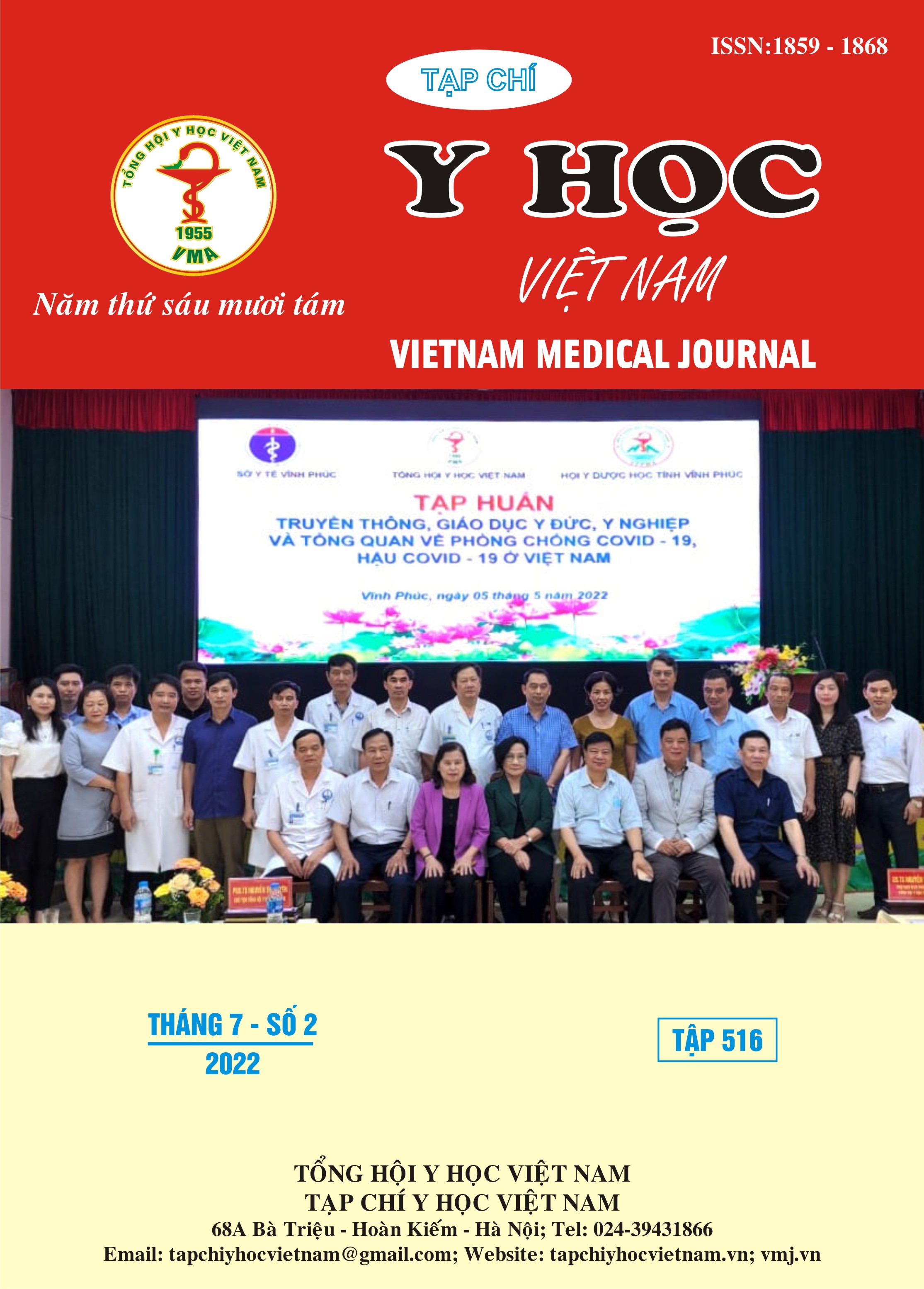NGHIÊN CỨU MỘT SỐ YẾU TỐ LIÊN QUAN TỪ MẸ VÀ CON ĐẾN VÀNG DA TĂNG BILIRUBIN GIÁN TIẾP Ở TRẺ SƠ SINH TẠI ĐƠN VỊ NHI SƠ SINH BỆNH VIỆN TRƯỜNG ĐẠI HỌC Y DƯỢC HUẾ
Nội dung chính của bài viết
Tóm tắt
Mục tiêu: Mô tả đặc điểm lâm sàng và cận lâm sàng vàng da tăng bilirubin gián tiếp (VDTBGT) ở trẻ sơ sinh. Và tìm hiểu một số yếu tố liên quan từ mẹ và con đến VDTBGT ở trẻ sơ sinh. Phương pháp nghiên cứu: Nghiên cứu bệnh-chứng (82 trẻ vàng da: 82 trẻ không vàng da) tại đơn vị Nhi sơ sinh, Bệnh viện Trường Đại học Y Dược Huế từ 5/2021 đến 30/6/2022. Kết quả: Tổng số 82 trẻ sơ sinh được chẩn đoán VDTBGT. Tỷ lệ nữ 57,3%, sơ sinh non tháng (SSNT) 46,4%. Đa số trẻ có xuất hiện vàng da sớm trong 48 giờ đầu sau sinh (65,8%) trong đó phát hiện sớm trong 24 giờ đầu là 32,9%. Giờ tuổi trung bình trẻ được chẩn đoán là 41,5 (26-64) giờ, tỷ lệ trẻ biểu hiện vàng da đến vùng 5 là 46,3%, vàng da vùng 1,2 chiếm 20,7%. Các nguyên nhân vàng da nhiễm khuẩn sơ sinh sớm (NKSSS) 47,6%, SSNT 46,3%, vàng da bất đồng nhóm máu mẹ con ABO 12%, đa hồng cầu 12,2%. Nồng độ bilirubin toàn phần trung bình là 206,7 (81,8-383,1) (µmol/L). Tỷ lệ trẻ vàng da có thiếu máu (Hb <13,5g/l) là 13,4% và đa hồng cầu (>=220g/l) là 11%. Phân tích đơn biến cho thấy trường hợp sinh thường, mẹ nhóm máu O, SSNT, cân nặng dưới 2500 gam, NKSSS và ngạt tăng nguy cơ VDTBGT(p<0,05). Phân tích đa biến cho thấy trẻ SSNT, cân nặng thấp, mẹ nhóm máu O tăng nguy cơ VDTBGT(p<0,05). Kết luận: Vàng da tăng bilirubin gián tiếp cần được đánh giá sàng lọc sớm, đặc biệt trường hợp trẻ có mẹ nhóm máu O, non tháng, cân nặng thấp, NKSSS, ngạt.
Chi tiết bài viết
Từ khóa
Vàng da tăng bilirubin gián tiếp, tan máu sơ sinh
Tài liệu tham khảo
2. Khu Thị Khánh Dung, Đặc điểm của trẻ sơ sinh nhập viện do tăngbilirubin máu cao tại Bệnh viện Nhi Trung ương. Y học Việt Nam, 2010. 4(2): tr. 29-32.
3. Lâm Thị Mỹ, Phạm Diệp Thùy Dương, Đặc điểm các trường hợp nhập viện vì vàng da tăng bilirubin gián tiếp ở khoa sơ sinh Bệnh viện Nhi Đồng II trong 3 năm 2009-2012. Y học thành phố Hồ Chí Minh, 2012. 16(2): tr. 70-72.
4. Ambalavana N, C.W.A., Jaundice and Hyperbilirubinemia in the newborn, in Kernicterus, Nelson Textbook of Pediatrics 20th. 2016, Elservier: Saunders, Philadelphia.
5. Bai JH, Mathew A, Risk Factors for Neonates with Hyperbilirubinemia. J Biomedical Journal of Scientific Technical Research, 2018. 2(1): p. 2097-2098.
6. Cherepnalkovski AP, Aluloska NN, Zdraveska N, et al, Neonatal Hyperbilirubinemia in Newborns of the Republic of North Macedonia, in Update on Critical Issues on Infant and Neonatal Care. 2019, IntechOpen.
7. Mostafa SA, Aljeesh Y, Hamad KA, et al, Risk Factors of Hyperbilirubinemia among Admitted Neonates in the Gaza Strip: Case Control Study. J Public Health Res, 2017. 7(2): p. 39-45.
8. Patil SS, Joshi R, Gupta G, et al, Risk Factors of Hyperbilirubinemia - A Case-Control Study in a Tertiary Level Hospital in Rural Central India. J The National medical journal of India, 2021. 10(25): p. 1904-1909.


